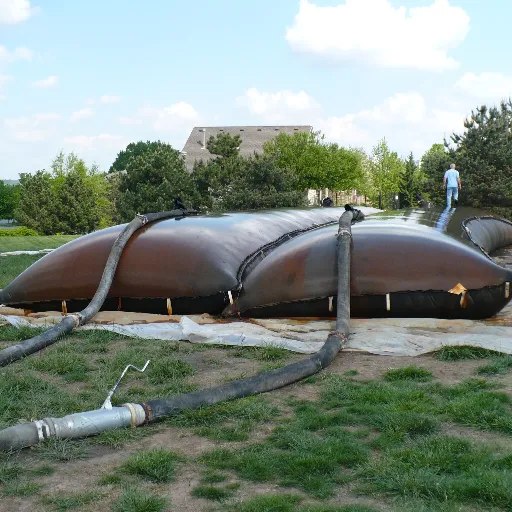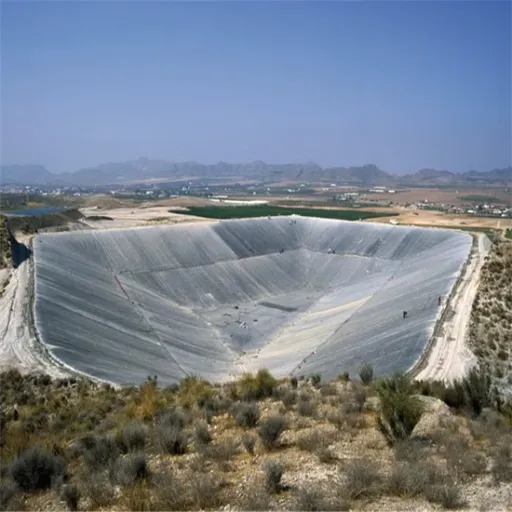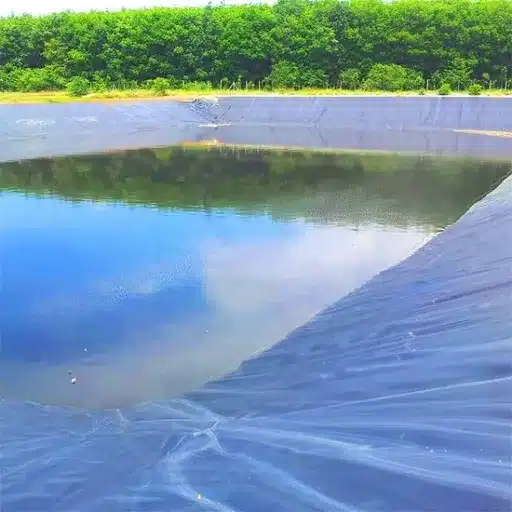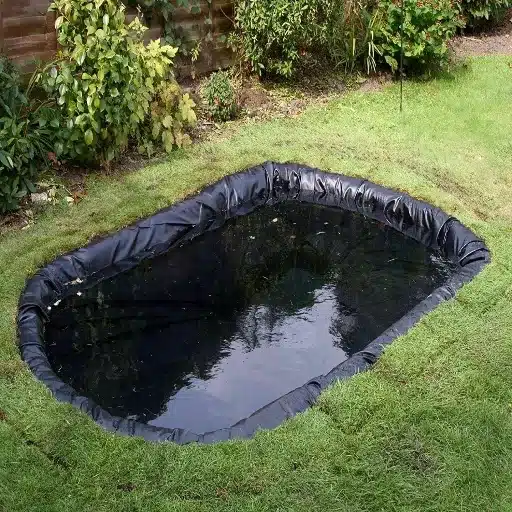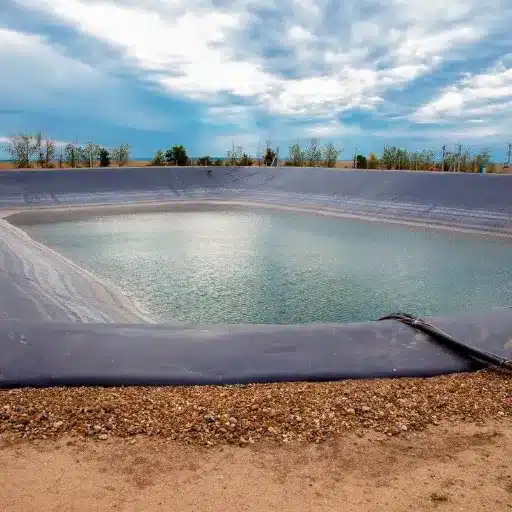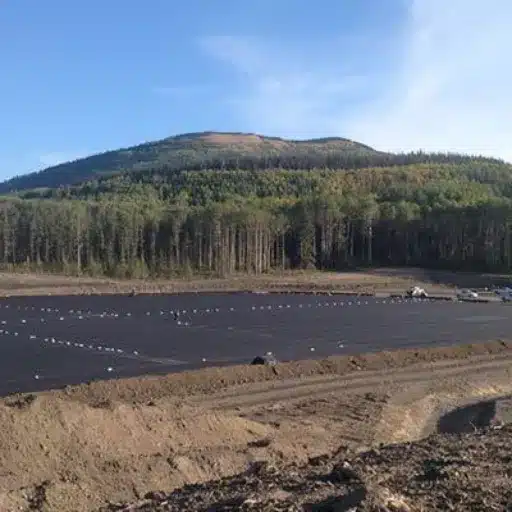In construction projects, storm water runoff, and industrial sectors, managing sediment and pollutants is a top priority for environmental regulation compliance. Dewatering bags, also known as sediment filter bags, represent the most effective solution for achieving sediment-free, regulation-friendly water drainage. This comprehensive guide explores their functionality, benefits, and critical role in modern environmental and construction applications.
Introduction to Dewatering Bags
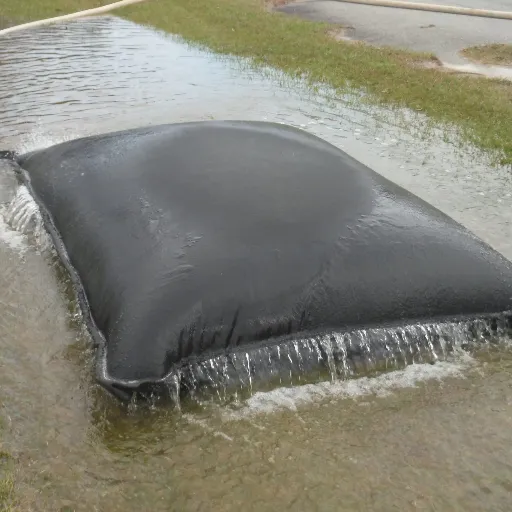
What Are Dewatering Bags?
Dewatering bags are specialized geotextile products designed to control and mitigate environmental damage caused by high sediment loadings. These innovative solutions excel at:
- Reducing suspended solid and silt loads during construction projects
- Managing stormwater effectively and safely
- Facilitating dewatering activities in construction processes
- Enabling significant solids settling using existing hydraulic machinery
- Providing simple attachment to stabilization mats on sediment basins
The Critical Importance of Sediment Control
Sediment control has become crucial in the modern era for multiple environmental and regulatory reasons:
Environmental Protection
The United States Environmental Protection Agency (EPA) identifies sedimentary pollution as one of the most significant threats to water bodies. Uncontrolled sediment can:
- Contaminate rivers, lakes, and coastal waters
- Impair and damage aquatic habitats
- Reduce overall water quality
- Increase flooding risk due to storm water channel blockage
🎯 Key Performance Statistic
Properly implemented sediment and erosion control plans can reduce sediment and erosion pollution by 80% when correctly deployed.
Primary Sources of Sediment Pollution
| Source | Impact Level | Common Locations |
|---|---|---|
| Construction Activities | High | Building sites, road construction, excavation projects |
| Agricultural Activities | Medium-High | Farmland, irrigation channels, livestock areas |
| Storm Water Runoff | Variable | Urban areas, industrial zones, parking lots |
Construction Applications for Dewatering Bags
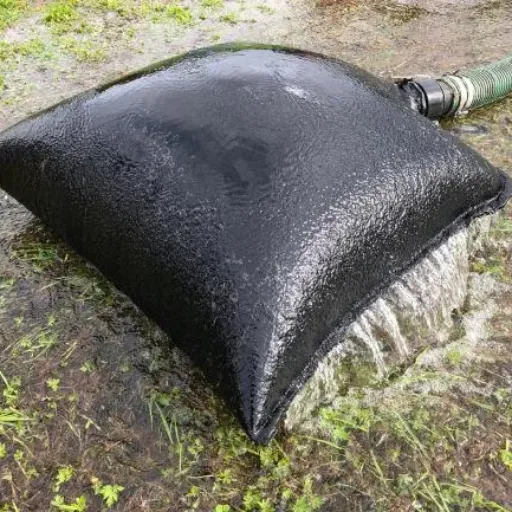
Essential Construction Uses
Dewatering bags have become indispensable tools for construction sites requiring environmental compliance and effective water management:
- Foundation Preparation: Managing groundwater removal and debris during excavation
- Site Dewatering: Providing filtered water discharge while containing sediments
- Environmental Compliance: Meeting EPA requirements for Total Suspended Solids (TSS) in discharge water
- Versatile Applications: Managing discharges from ponds, swells, trenches, and stormwater systems
💡 Cost-Effective Solution
Modern dewatering bags offer significant cost savings through:
- Reusability: Can be cleaned and reused with proper maintenance
- Zero Assembly: Ready-to-deploy design increases efficiency
- Recycling Options: Environmentally friendly disposal and reuse programs
Environmental Protection and Sediment Control Benefits
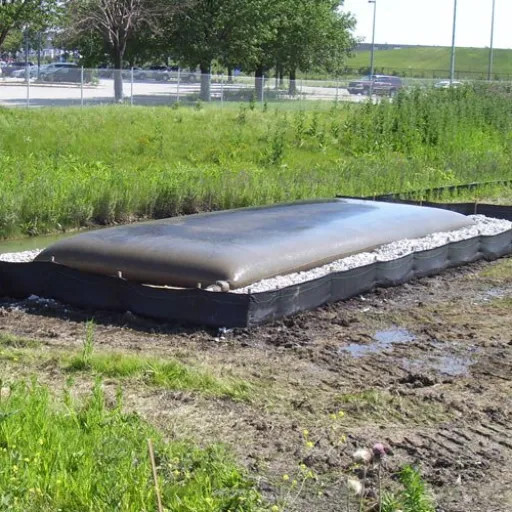
Advanced Filtration Technology
Modern geotextile dewatering bags represent a breakthrough in environmental protection technology:
🌊 Outstanding Performance Metrics
- TSS Reduction: Up to 99% reduction in Total Suspended Solids
- Fine Particle Capture: Effectively traps sediment pollution and fine particles
- Water Body Protection: Preserves rivers, lakes, and ecosystem integrity
Complementary Erosion Control Systems
When combined with traditional erosion control methods, dewatering bags create comprehensive protection systems:
| Control Method | Erosion Reduction | Best Application |
|---|---|---|
| Silt Fences + Dewatering Bags | 50-70% | Construction perimeters, slope protection |
| Wattles + Dewatering Bags | 60-80% | Channel protection, concentrated flow areas |
| Dewatering Bags Alone | 80-99% | Point discharge, pump discharge locations |
Advantages and Limitations of Dewatering Bags
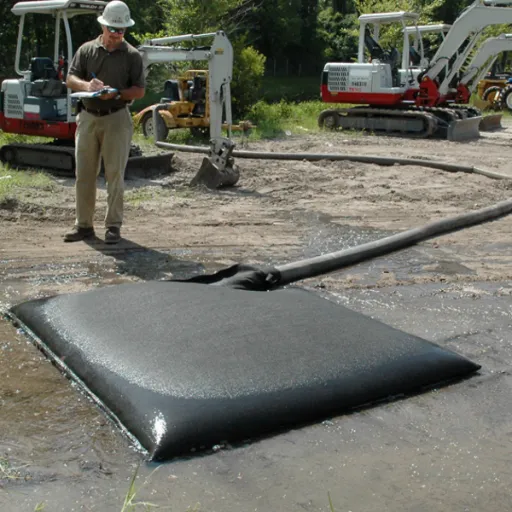
Key Benefits of Sediment Filter Bags
✅ Primary Advantages
Superior Sediment Removal
When properly installed, these bags can remove 90% of total suspended solids, protecting aquatic ecosystems and preventing sedimentation in dams and ponds.
Regulatory Compliance
Ensures compliance with water quality agencies and environmental regulations, reducing project delays and potential violations.
Easy Installation and Maintenance
Freestanding and portable design allows for extremely easy installation with minimal maintenance requirements. Units can be easily replaced rather than thoroughly cleaned, saving time and labor.
Cost-Effectiveness
Represents an outstanding cost-effective solution compared to advanced filtration systems, with direct cost benefits for project contracts.
Important Limitations and Considerations
⚠️ Key Limitations to Consider
Capacity Constraints
Bag capacity depends on size and structure, affecting filtration levels and sediment handling capability. Large projects may require multiple bags, increasing implementation costs.
Site-Specific Requirements
Proper location assessment is crucial to ensure effective sediment trapping without causing soil erosion or harmful discharge to water bodies.
Maintenance Demands
Regular inspection, monitoring, and maintenance are mandatory. High sediment load environments may require daily inspection for environmental compliance.
Disposal Regulations
Used sediment filter bags must be disposed of according to local environmental regulations to prevent pollution violations and fines.
Selection Criteria for Dewatering Bags
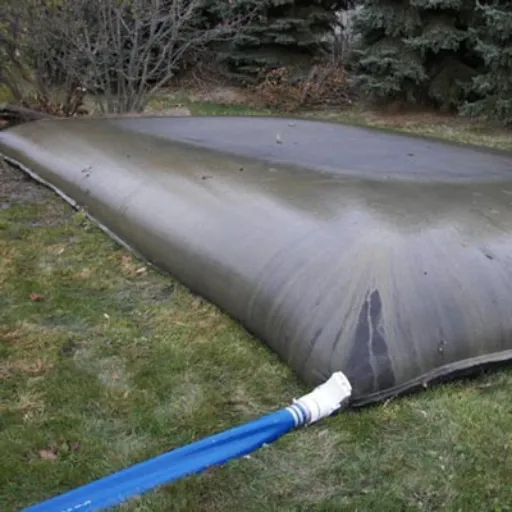
Size and Capacity Considerations
Selecting the appropriate dewatering bag requires careful consideration of several factors:
| Bag Size | Capacity Range | Best Application | Flow Rate |
|---|---|---|---|
| 5′ x 5′ (Compact) | 100-300 gallons | Small projects, residential | 50-100 GPM |
| 10′ x 10′ (Standard) | 500-1000 gallons | Medium construction sites | 100-200 GPM |
| 15′ x 15′ (Large) | 1000-2000 gallons | Commercial projects | 200-300 GPM |
| 20′ x 20′ (Industrial) | 2000+ gallons | Industrial scale operations | 300+ GPM |
Critical Selection Factors
- Volume of water to be treated
- Type and quantity of sediment on site
- Available deployment space
- Fabric filtration capacity and durability
- Compatibility with existing pumping systems
- High-quality filtration fabric for maximum particle retention
Installation and Maintenance Best Practices
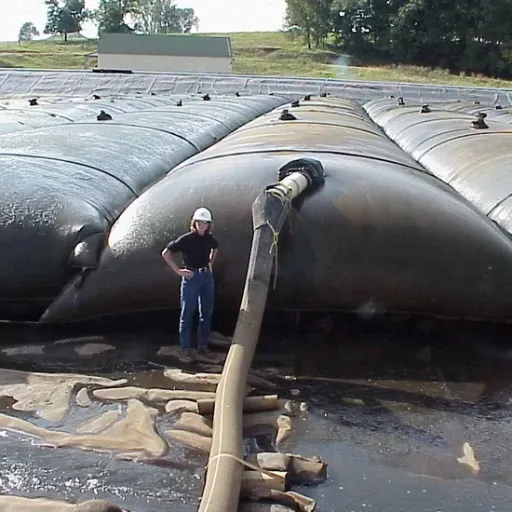
Proper Installation Procedures
Ground Preparation
- Site Clearing: Remove waste products, vegetation, roots, and sharp materials
- Surface Preparation: Level and compress the surface for optimal operation
- Safety Assessment: Ensure no piercing hazards threaten fabric integrity
Fabric Orientation and Installation
- Flow Alignment: Orient rolls in the direction of expected flow and stress
- Overlap Management: Maintain 12-18 inches of perpendicular separation between multiple layers
- Secure Anchoring: Use sandbags, pins, or weighted anchors for stability in high-flow conditions
Installation Safety Guidelines
- Avoid Overstretching: Prevent fiber weakening through careful handling
- Equipment Precautions: Keep oversized equipment at safe distances
- Material Protection: Handle with care to prevent tearing and damage
Backfill and Finishing
🔧 Professional Backfill Methods
- Material Selection: Use granular, sandy soil backfills instead of sharp aggregate
- Layer Compaction: Compact backfill in layers for extra strength
- Sharp Object Avoidance: Prevent geotextile damage through careful material screening
- Manufacturer Compliance: Follow specific tension, overlap, and temperature requirements
Proper Disposal of Used Dewatering Bags
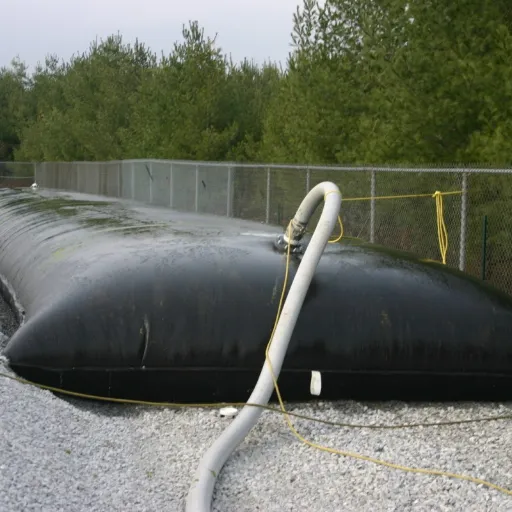
Environmental and Legal Compliance
Disposal of used dewatering bags requires strict adherence to environmental regulations:
- Content Analysis: EPA requires thorough research of bag contents to determine hazard classification
- Non-Hazardous Materials: Dispose at approved landfills following local regulations
- Hazardous Materials: Must be processed at specialized facilities under RCRA regulations
- Industrial Contamination: Bags containing industrial chemicals require special handling to prevent groundwater and soil contamination
💰 Financial Penalties
Non-compliance with disposal regulations can result in fines up to $70,000 per violation. Ensure proper documentation and certified disposal methods.
Sustainable Disposal Options
| Disposal Method | Environmental Impact | Cost Factor | Availability |
|---|---|---|---|
| Manufacturer Recycling Programs | Low | Low-Medium | Limited |
| Reusable Bag Systems | Very Low | Low | Increasing |
| Biodegradable Options | Very Low | Medium | Specialized |
| Certified Waste Facilities | Medium | High | Widespread |
Reference Sources
- AIRE Environmental – Dewatering Bags
This source explains the design and functionality of dewatering bags, focusing on their use in filtering sediment and pollutants during construction or demolition activities.
Source - WINFAB USA – How Dewatering Bags Work
This article provides insights into the materials used in dewatering bags, such as nonwoven and woven geotextile fabrics, and their applications in various industries.
Source - OVASCO – Geotextile Dewatering Bags Overview
This overview highlights the environmental benefits of using geotextile dewatering bags, including their role in protecting water sources and ensuring safe discharge practices.
Source
Frequently Asked Questions (FAQs)
Dewatering bags provide a lightweight solution for groundwater extraction operations. They feature specialized piping systems that allow water to flow through while capturing sediments, sands, silts, and other particles through the bag’s filtration system.
Typical dewatering bag materials include woven and nonwoven geotextiles, designed to filter embedded solutions through environmentally-friendly polyethylene film pores. This ensures cost-effective, high-quality filtration services across various environmental conditions.
Sediment filter bags manage water bodies by preventing contaminated water from passing through non-preferred areas. The geotextiles filter out silt and other physical particles, ensuring compliance with Best Management Practices (BMP) and environmental standards during construction.
Yes, reusable dewatering bags are available in the market. These bags can be washed, emptied, and stored for future projects, providing convenient cost savings for contractors who would otherwise purchase new bags for every project.
Key beneficial features include ultraviolet resistance, specialized weave patterns, and high-strength materials. Performance depends on capacity to handle different sediment forms, including sands and oils, while meeting strict environmental requirements.
Sludge and sediment remaining in dewatering bags should be placed in designated disposal sites after bags are properly cut open. All waste disposal must follow regional guidelines to ensure environmental protection and regulatory compliance.
Dewatering bags work alongside dewatering pumps to provide comprehensive wastewater treatment solutions. The bags filter solid materials while allowing clean water to pass through, preparing the wastewater for safe drainage or potential reuse applications.
Conclusion
Dewatering bags represent a critical technology for modern environmental protection and construction compliance. Their ability to achieve up to 99% TSS reduction while providing cost-effective, reusable solutions makes them indispensable for responsible construction and industrial operations. Proper selection, installation, and disposal ensure maximum environmental benefit while maintaining regulatory compliance and project efficiency.

